I was incorrectly diagnosed for many years, but almost 20 years from my 1st pituitary surgery of 3, pituitary radiation, follicular lymphoma, chemotherapy and radiation to the duodenum, I am happy to report that I am finally better than I have been in years. The journey has not been easy or predictable; however, information received from CRSF, Dr. Sellin, and talking to other Cushing’s patients has made the journey make more sense. With additional knowledge, I have been able to make educated decisions that have changed my life.
My first health issue came at age 13, when I was diagnosed with scoliosis and wore the Milwaukee brace for 18 months to help straighten my back. At age 18, I weighed about 120 lbs. I was “skinny” and tall (5’8”). I graduated from high school and attended the university, majoring in music. In 1974, I married my wonderful husband and starting taking birth control pills. I gained a “little” weight and thought it was because of the “pills”. I had never had a weight problem and never even thought about what I ate before “this” started happening. In 1976, I graduated with a bachelor’s degree in music education in flute.
By 1977, at 23 years of age, my weight had increased to 145 lbs, and I had difficulty conceiving our first child. I joined Weight Watchers and got down to 130 lbs. I took Clomid for 7 months, the last 4 months at a double dose and still did not get pregnant. The month after I stopped Clomid, I was finally pregnant. I delivered a healthy, 8-lb, 2-oz baby girl, nursed for 8 l/2 months, and did not lose all of the weight I had gained (30 lbs). I had no menstrual cycle after the first pregnancy because I was nursing my daughter and became pregnant again in 1980 while nursing. Weighing 175 lbs, I delivered a healthy, 10-lb baby boy. I nursed for 10 months and got back down to 155 lbs.
In the years following, life was on fast “speed.” Little did I know that the cortisol levels were creeping up. While I did not feel well and was slowly gaining weight, my physician said, “Lose weight, you are just getting older.” Another physician said, “Take it easy, your heart is fine; it is just speeding up sometimes, probably due to nightmares or panic attacks.” I did not have nightmares or panic attacks, but my heart would consistently speed up in the middle of the night. I started taking my pulse when I woke up feeling like there was a “bass drum” pounding fast in my chest. It didn’t hurt, but I couldn’t sleep. I had several Holter monitors in the following years but still no answers or even a diagnosis. I would only sleep 3 or 4 hours a night, wake up and work on projects and then go back to sleep for a couple more hours and then got up for the day. After several years of this sleep pattern, it was starting to wear on me; the fatigue and weight just kept increasing.
In 1991, I was 37 years of age and weighed 190 lbs at which point I saw my first endocrinologist. She put me on a “liquid” diet and said I was hypoglycemic and borderline diabetic. My weight did go down a little, but as soon as I stopped the “liquid” diet, the weight went right back up. I also had increased hair growth and elevated androgens. This physician obviously missed the diagnosis.
In 1993, my primary care physician, Dr. Huey sent me to Dr. C., another endocrinologist in Houston, TX, for “abnormal thyroid function studies.” Dr. C. diagnosed me when I walked in the door, but it took several months of tests to confirm the diagnosis. Thus, Dr. Huey (and the endocrinologist) saved my life at this time. An MRI showed a tumor (4 mm x 6 mm x 4 mm) on right side of my pituitary; my adrenocorticotropic hormone (ACTH) was high, and results of a dexamethasone suppression test were consistent with Cushing’s. I was on Synthroid before the first surgery. I did have fatigue, weight gain, heart palpitations, skin fragility, abdominal striae, centrifugal fat, ruddy complexion, increased sweating, and superclavicular fullness. I did not have high blood pressure, a buffalo hump, or take any anti-depressants.
Weighing 220 lbs, I had my first transsphenoidal surgery in November 1993 at St. Luke’s Hospital in Houston, TX, by Dr. Stuart Weil, a neurosurgeon. Dr. Ashe, an ear, nose, and throat surgeon, started the surgery and closed afterwards. Dr. Ashe commented that the tissue was “falling apart” when he was trying to close. He put back what he could, but I still have a hole between nostrils. I developed diabetes insipidus and spent 2 days in intensive care and 5 more days in the hospital. At that time, Dr. C. told me “Studies came back on the tumor showing no ACTH staining, which I find hard to believe.” After this first surgery, I was extremely fatigued and ended up not working for 3 months. I also had a staphylococcal infection in my nose that was very uncomfortable. I went to the ENT every other day (30 miles one way) just so I could breathe. I also saw a rheumatologist for pain. Looking back, I think this pain was definitely due to steroid withdrawal.
About 3 months after my first surgery, I had a bloody discharge from my left breast, which was diagnosed as a papilloma; a small tumor was surgically removed. I was given Medrol for a reaction from the breast issue. The extreme body pain I was having before almost stopped completely when I took the Medrol. It was a miracle. Thus, when I next saw the rheumatologist for pain, he prescribed Medrol, very, very reluctantly, and several months later I tapered off Medrol and the pain also finally subsided. During the next 3 years, I started losing weight (down to 145–150 lbs), and my life was starting to get back on track. My Mom said, “I finally have my Sandy back.” I didn’t realize the impact my excessive weight had had on my family.
Almost 3 years after my first surgery, I was sitting in the bathtub and noticed a milky discharge from my breasts. I went directly to my primary care physician, had a pituitary MRI, which showed that a 3.0 mm microadenoma was back. I went back to Dr. C., and he said, “It is probably a benign tumor, as you can’t have Cushing’s twice”; he elected to do nothing but wait and see. There are many steps I should have taken at that time, but I was so tired that I just listened to him. I knew you could have a recurrence of Cushing’s. I constantly visited Dr. C.’s office asking for more tests to be done but to no avail. He made me think I was crazy. I gained 23 lbs in just 3 months. By the time the second surgery took place in 1999, (17 months after the tumor showed up for the second time on MRI), I weighed 215 lbs, was diabetic, had acid reflux, thyroid issues, and stress fractures in my feet. Dr. Stuart Weil was the surgeon again. Two specimens labeled “pituitary tumor” were collected. I was in intensive care for 4 days, 2 of which were due to “passing out” and having to call a critical care physician and then 3 more days in hospital. I had a cerebrospinal fluid leak and diabetes insipidus.
When this surgery was over, I didn’t feel like I did after the first one. (I really felt like the first surgery worked.) My biggest issue when I came home was severe pain in my left shoulder. I think it was the positioning during surgery. I was again out of work for 3 months. Dr. C. gave me a prescription for replacement cortisol and told me to get a medic-alert bracelet, as I would likely be taking steroids for the rest of my life. I was not happy about this. My daughter had just entered Baylor University and my son was a senior in high school and getting ready for his freshman year at University of Texas-Austin. I was teaching private flute lessons, master classes, and performing professionally. I did not have time to be sick. It was taking precious time away from my family. Nothing was getting better. Dr. C. didn’t run any more tests; he just said to take the replacement cortisol and come back for checks.
Finally, in June of 2000, I went to MD Anderson Cancer Center in Houston, TX. Dr. Rena Vassilopoulou-Sellin, Internist and Professor of Medicine, Endocrine Neoplasia Hormonal Disorders at MD Anderson Cancer Center finally listened to me. She had me off the “replacement” steroids in 6 weeks, and all my levels were still high. Dr. Sellin consistently checked ACTH levels, 24-hr cortisol, and blood cortisol tests. The results really told my story, and I finally felt sane again. Before December 2000, my menstrual cycles just stopped and have never started back. In December, 2000 Dr. Ian McCutcheon, surgeon, MD Anderson Hospital, performed my third pituitary surgery and removed a 3.0 x 2.0 x 2.0 mm “pituitary tumor” which was not shown to contain any tumor. I had also just acquired my third scar along my abdomen from fat taken to pack the pituitary. This surgery was not successful. I had a cerebrospinal fluid leak and diabetes insipidus again.
The results of a 2001 MRI read “In the intrasellar region, there is a tiny rind of enhancement that likely represents native pituitary tissue.” So after three pituitary surgeries, I had only a rind of a
pituitary left, was told “No one would ever operate on my pituitary again,” and my ACTH and cortisol levels were still elevated.
In 2001, I had radiation to the pituitary, and was 230 lbs. In May, 2002, after three surgeries, failed metyrapone therapy, and radiation therapy, I began therapy with mifepristone (RU486). This was not a FDA-approved medicine for Cushing’s (it was FDA approved 10 years later). Dr. Sellin had to receive a CIND from the FDA for this drug. It was supplied to Dr. Sellin by the Feminist Majority Foundation. I started on this drug, so hoping it would be my “cure” as there were not many choices left.
I had a routine esophagogastroduodenoscopy and colonoscopy in June 2002 and was diagnosed with follicular lymphoma in the duodenum. I had a very rare form of cancer with no real “standard”
treatment. This was a real shock. I underwent six rounds of chemotherapy in 2002 and radiation to my duodenum in 2003. Chemotherapy patients are given steroids routinely, but they did not give me any as I was producing enough on my own. Dr. Sellin tapered me off the mifepristone during this time to make sure I had enough steroids. I personally think the Cushing’s caused my lymphoma.
In the spring of 2004, Dr. Sellin discussed a bilateral adrenalectomy with me. I visited the surgeon and made plans for the removal of my adrenal glands. Before the surgery, my cortisol levels finally went down, and then they became inconsistent. Dr. Sellin cancelled the surgery, and we just waited. It took forever for the radiation to take effect, but I truly feel that is why my levels came down.
Going forward 8 years to the fall of 2012, two out of three tests for Cushing’s were normal. That is a miracle, and a lymphoma check was also clear. Many issues have presented themselves since 1993. I have fatigue, type 2 diabetes, low thyroid hormone levels, neuropathy in my feet presumably from diabetes or maybe the scoliosis, acid reflux, psoriasis, very dry skin, growth hormone deficiency, facial hair, skin cracking on my heels, several toe joints replaced, Morton’s neuroma, ganglion cyst, osteopenia, sleep apnea, dry mouth, scoliosis, and memory issues. I have had no menstrual cycle since 2000, but no symptoms of menopause, which is very good. I do not sweat, except for my head. Thus, I have no way to cool off so I wear shorts when everyone else needs a jacket. The hair on my legs and underarms is minimal. I am truly blessed with not having heart issues or depression issues, and I am now cancer free. The most consistent symptom, fatigue, has greatly improved with the use of Nuvigil. I have taken Nuvigil every morning for the past few years, and I feel like my life is closer to what it used to be many, many years ago. And my weight, while not perfect, is so much better.
I teach about 50 flute students a week as well as flute master classes and play professionally with a local symphony. I am so thankful and blessed for all the
excellent care and friendships I have at MD Anderson Hospital, particularly Dr. Sellin for my Cushing’s and Dr. Fayad who got me through the lymphoma. Also, Dr. Huey for helping me find help for this “devastating” disease in 1993.
My advice to other Cushing’s patients is to think positively and continue to collect information on this life-altering and devastating disease. I am determined not to let this disease control my life. Most of all, I am thankful for the incredible loving support from my husband, Dale, of 39 years, my wonderful children-Rachel & Russell, my family and most of all, my faith. I could not have made it this far without them or my faith – they have ALL been my rock. I have 6 beautiful grandchildren (3 girls & 3 boys) 2 years old and under and they are all twins – 3 sets of twins! I am truly blessed!!
I would be happy to talk to anyone who is recently diagnosed or who has had a history much like mine.
Member: 080043
Newsletter: Summer, 2013
State: Texas






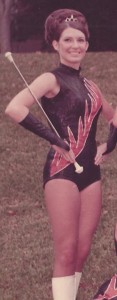
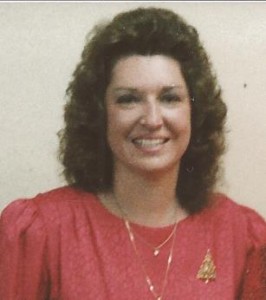
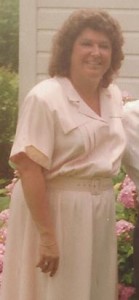
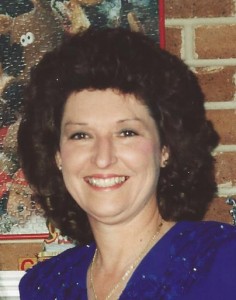
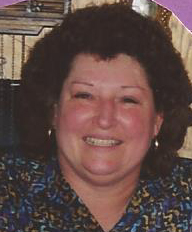

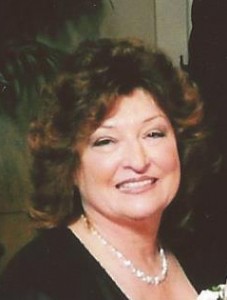
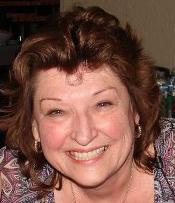
Sorry, comments are closed for this post.